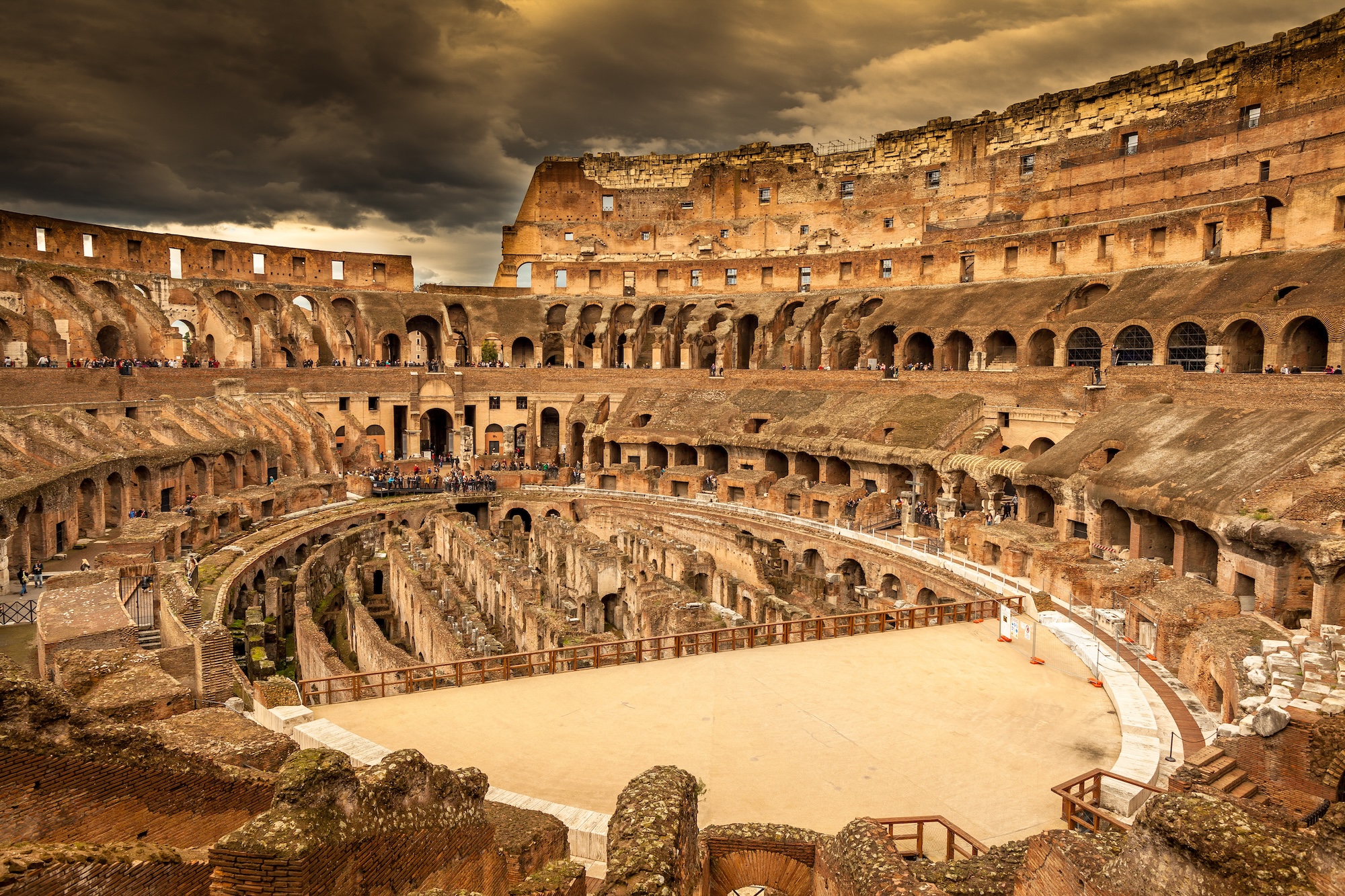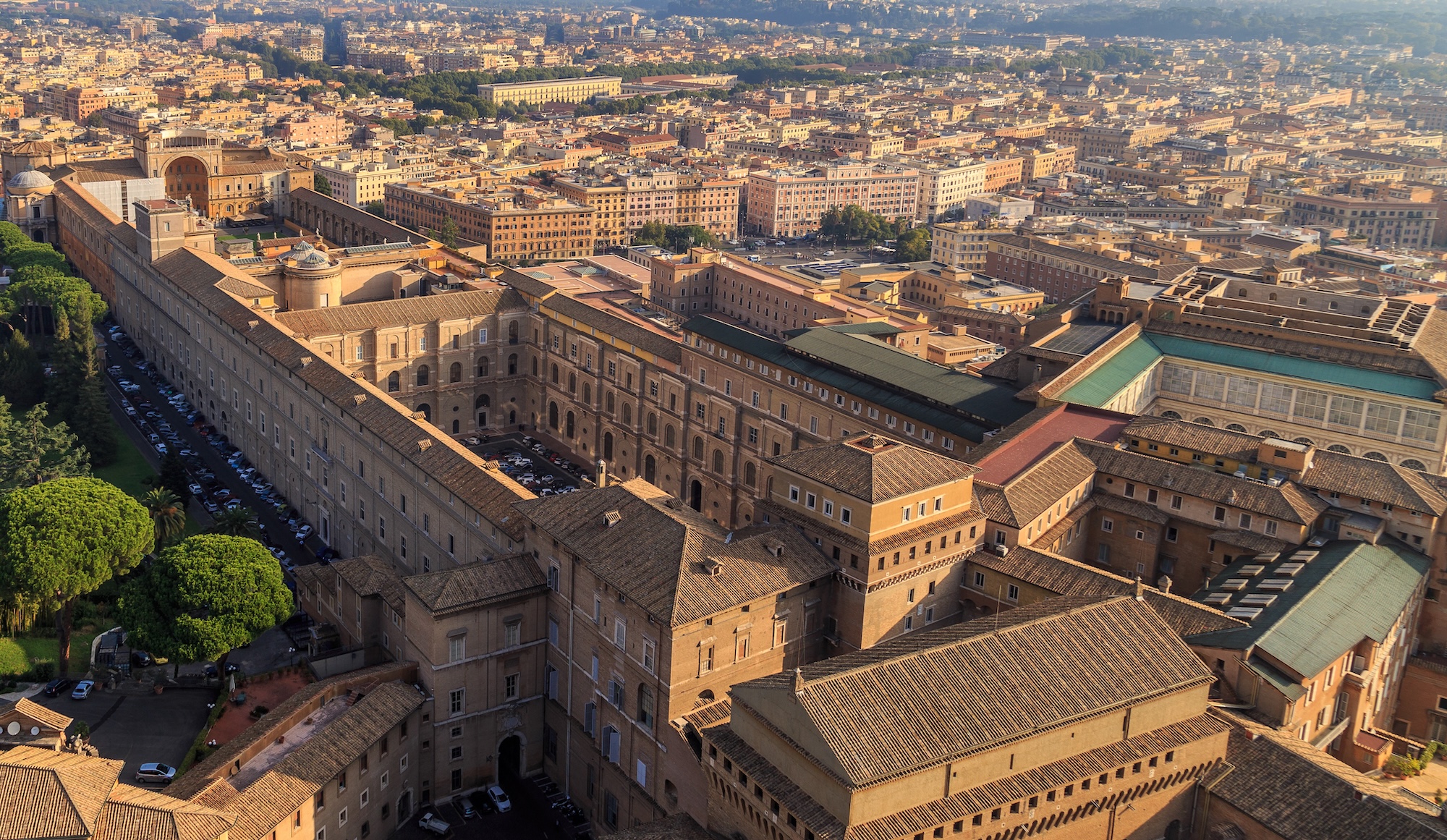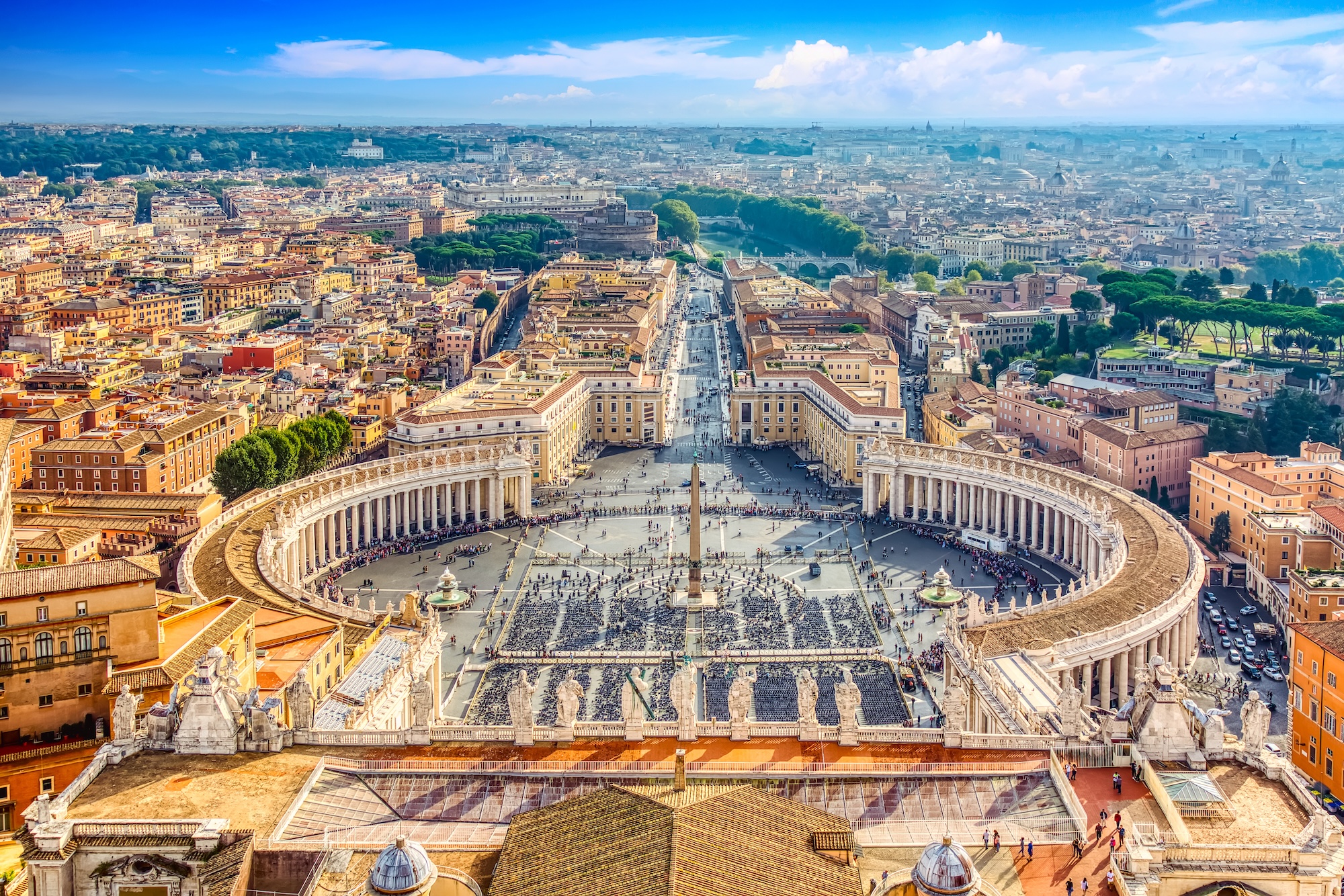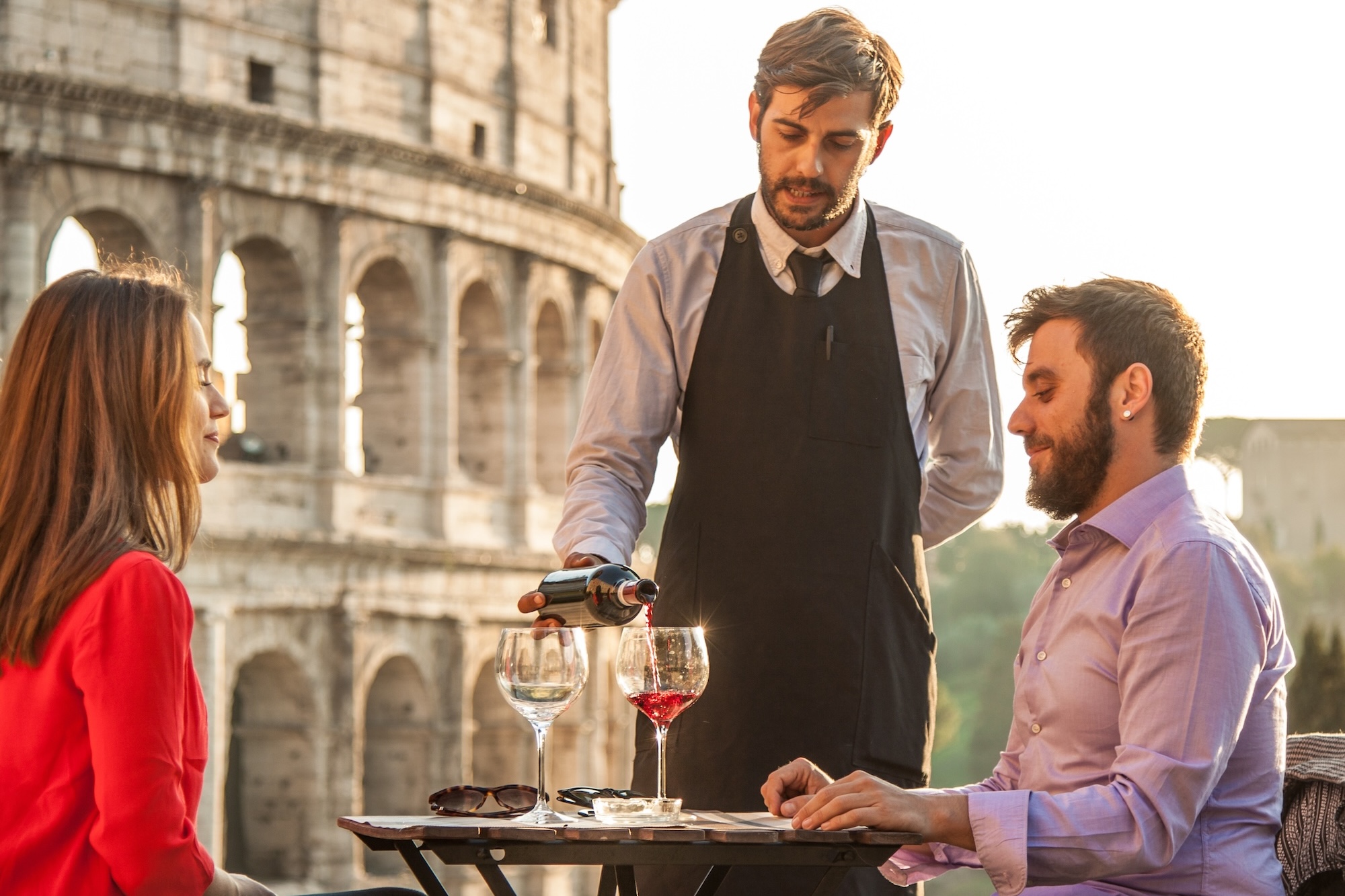
World Travel Tips
What Should You Do in Rome?
Rome is a city that blends ancient history with vibrant modern life, making it an essential destination for travelers seeking both cultural immersion and awe-inspiring landmarks. Known as the “Eternal City,” Rome is home to some of the most iconic attractions in the world. Whether you’re drawn to its ancient ruins, stunning art, or remarkable architecture, there’s something for every kind of visitor. Here are the top 10 attractions in Rome that every traveler should experience:
1. The Colosseum

One of the most iconic landmarks in the world, The Colosseum is a symbol of ancient Rome’s grandeur. This enormous amphitheater once hosted gladiatorial combat, mock naval battles, and public spectacles. Today, visitors can explore its ruins and learn about the history of these spectacular events.
Why visit?
The Colosseum offers a chance to step back in time and immerse yourself in ancient Roman history. The scale and engineering of the structure are awe-inspiring, and it’s a must-see for anyone visiting Rome for the first time.
2. The Vatican Museums and Sistine Chapel

Home to some of the most famous art collections in the world, the Vatican Museums house works by Raphael, Leonardo da Vinci, and Michelangelo, among others. The Sistine Chapel, with its breathtaking ceiling painted by Michelangelo, is one of the most visited places in the world.
Why visit?
The Vatican Museums are a treasure trove of art and culture, and the Sistine Chapel is the crowning jewel of Renaissance art. It’s an unforgettable experience for art lovers and a must-see for anyone visiting Rome.
3. St. Peter’s Basilica & St. Peter’s Square

Located in Vatican City, St. Peter’s Basilica is one of the largest and most important churches in the Christian world. The church features stunning Renaissance architecture, including the magnificent dome designed by Michelangelo. Just outside the basilica is St. Peter’s Square, an expansive plaza designed by Gian Lorenzo Bernini. The square’s grandiose colonnades and central obelisk create an awe-inspiring setting for visitors.
Why visit?
Not only is St. Peter’s Basilica a significant religious site, but the architecture and artistry within are breathtaking. It’s home to many masterpieces, including Michelangelo’s Pietà, and offers a chance to admire some of the finest art and architecture in the world. Visitors can also climb to the top of the dome for panoramic views of both the basilica’s interior and the surrounding city. The grand St. Peter’s Square adds to the experience, offering a place to take in the beauty of the basilica’s façade and the iconic columns that frame the space, often bustling with people from around the globe.
4. The Pantheon
This remarkably well-preserved ancient Roman temple, now a church, has stood for nearly 2,000 years. Known for its massive domed roof with a central oculus, the Pantheon is one of the most impressive feats of Roman engineering.
Why visit?
The Pantheon’s architectural grandeur and rich history make it a must-see for visitors. The building’s perfect symmetry and timeless design continue to inspire architects and visitors alike.
5. Trevi Fountain
Arguably the most famous fountain in the world, the Trevi Fountain is a stunning Baroque masterpiece. Visitors traditionally toss a coin over their left shoulder into the fountain, ensuring their return to Rome.
Why visit?
Its dramatic design and the myth surrounding the coin toss make the Trevi Fountain a must-see and a fun part of any trip to Rome. The atmosphere around the fountain is always lively, especially in the evening when the lights illuminate the water.
6. Roman Forum
The Roman Forum was once the heart of ancient Rome, the site of political, social, and commercial activities. Today, it’s an archaeological site with impressive ruins, including temples, basilicas, and the Senate House.
Why visit?
Visiting the Roman Forum allows you to walk in the footsteps of ancient Romans and experience the atmosphere of their daily life. It’s an essential stop for history enthusiasts.
7. Piazza Navona
Piazza Navona is a lively public square filled with beautiful Baroque architecture and three grand fountains, the most famous of which is Bernini’s Fountain of the Four Rivers. The square is surrounded by cafes and artists, making it a perfect place to relax and enjoy the atmosphere.
Why visit?
The stunning fountains, vibrant atmosphere, and historical significance make Piazza Navona a beautiful and quintessential part of Rome. It’s a great place to take a leisurely stroll or sip a coffee.
8. Castel Sant’Angelo
Once a mausoleum for the Roman Emperor Hadrian, Castel Sant’Angelo has also served as a fortress and papal residence. Visitors can explore its extensive museum and enjoy panoramic views of the city from the top.
Why visit?
The castle’s rich history and beautiful setting near the Tiber River make it a fascinating destination. The views from the rooftop are also some of the best in Rome, offering a unique perspective of the city.
9. Piazza di Spagna & Spanish Steps
The Spanish Steps, one of Rome’s most famous landmarks, lead up to the Trinità dei Monti church. The steps are a popular gathering place, offering views of the lively Piazza di Spagna and the elegant shopping district surrounding it.
Why visit?
The Spanish Steps are both a beautiful and vibrant spot in the heart of Rome. Whether you’re sitting on the steps people-watching, shopping in nearby boutiques, or enjoying a gelato, it’s an iconic place that captures the essence of Rome.
10. The Catacombs of Rome
Rome is home to several ancient catacombs, which were once burial sites for early Christians. The Catacombs of San Callisto and San Sebastiano are the most famous, offering a fascinating insight into Rome’s early Christian history.
Why visit?
For those interested in Rome’s religious history, the catacombs are an intriguing and slightly eerie way to explore the city’s past. They offer a unique contrast to the grandiose landmarks of Rome, providing a glimpse into the more humble aspects of ancient life.
Bonus: Villa Borghese Gardens and Galleria Borghese
Villa Borghese is a vast public park that offers a peaceful respite from the bustling streets of Rome. The park is home to the Borghese Gallery, which contains a prestigious collection of art, including works by Caravaggio, Bernini, and Titian.
Why visit?
The gardens are perfect for a leisurely stroll, and the Galleria Borghese is a must-see for art aficionados. The combination of nature and art in this tranquil setting makes it an ideal spot for relaxation and cultural enrichment.
Seasonal Recommendations
☀️ Summer (June–August): Summer is the busiest and most popular time to visit Rome. Expect long, sunny days with temperatures often ranging from 25°C to 35°C (77°F to 95°F). While the heat can be intense, the city is alive with energy. Tourists fill the streets, piazzas buzz late into the night, and landmarks like the Colosseum and Trevi Fountain are especially vibrant in the golden light of summer evenings. It’s a great time to enjoy open-air dining, lively festivals, and extended museum hours. Be prepared for large crowds and book major attractions well in advance.
🌸 Spring (March–May): Spring is one of the best times to experience Rome comfortably. Temperatures range from 13°C to 23°C (55°F to 73°F), and the city begins to bloom with color. The crowds are smaller than in summer, but there’s still a lively atmosphere. It’s a perfect time for strolling through the Villa Borghese Gardens, wandering cobblestone streets, or relaxing in outdoor cafés. Visiting the Vatican Museums in spring can be especially rewarding with shorter lines and more pleasant weather for exploring the surrounding area.
🍁 Autumn (September–November): Fall is a beautiful and often underrated time to visit. The summer heat begins to ease, with temperatures ranging from 15°C to 27°C (59°F to 81°F), and the crowds start to thin out—especially after mid-October. The warm hues of autumn bring an added charm to historic landmarks, and it’s a great time for taking in the views from Castel Sant’Angelo or enjoying an evening walk through Piazza Navona. Local markets, wine festivals, and seasonal foods make this a delicious time to explore Rome.
❄️ Winter (December–February): Winter is the quietest season in Rome, with daytime temperatures generally ranging from 4°C to 13°C (39°F to 55°F). While it’s the off-season for tourism, the city has a cozy, authentic feel. Attractions like the Pantheon and St. Peter’s Basilica are far less crowded, and holiday decorations bring festive charm to public spaces. It’s a great time to enjoy museums, hearty Roman cuisine, and local life without the summer hustle. Just bring a warm coat and an umbrella for the occasional rain.
Rome Excursions
Tips for Your Visit
Rome is a city where ancient history meets modern-day charm, and navigating it can be as exciting as it is rewarding. To make the most of your time in the Eternal City, here are a few essential tips to help you get around, enjoy the local cuisine, communicate with locals, and stay safe.
1. Getting Around: Rome’s historic center is best explored on foot to fully appreciate its cobblestone streets and hidden gems. The city also has an efficient public transport system, including buses, trams, and the metro, which is especially useful for longer distances. However, be prepared for the occasional traffic jam, and if you’re in a hurry, consider using electric scooters or bikes available through various apps. Also, note that taxis in Rome don’t always run on meters, so make sure to agree on the fare before getting in.
2. Local Cuisine: Roman cuisine is simple yet packed with flavor. Must-try dishes include cacio e pepe (pasta with Pecorino cheese and black pepper), amatriciana (tomato-based pasta with guanciale), and saltimbocca alla Romana (veal with prosciutto and sage). For a quick snack, grab supplì (fried rice balls filled with cheese) from a local pizzeria. Don’t forget to finish your meal with a creamy gelato or a tiramisu. For the best dining experience, avoid overly touristy restaurants and opt for local trattorias where Romans themselves eat.
3. Language: While English is commonly spoken in tourist areas, learning a few basic Italian phrases will help you connect with locals. Simple greetings like “Ciao” (hello), “Grazie” (thank you), and “Per favore” (please) will be appreciated. Additionally, it’s useful to know that in Italy, titles like “Signore” (Mr.) or “Signora” (Mrs.) are often used as a sign of respect. Italians also tend to speak more slowly and clearly if you make an effort to speak their language, so don’t be afraid to try!
4. Safety: Rome is generally safe for tourists, but like any major city, it’s important to stay alert, especially in crowded spots like the Colosseum, Trevi Fountain, and public transport. Keep your valuables secure, particularly in tourist-heavy areas where pickpocketing can occur. It’s also a good idea to avoid walking alone late at night in less busy areas. When taking a taxi, always use official taxis or rideshare apps like Uber to ensure your safety and avoid scams.
3 Popular Restaurants
Rome is a city that offers a rich culinary scene, where history and modernity blend together on every plate. From traditional trattorias to Michelin-starred fine dining, there’s no shortage of places to enjoy exceptional food. Whether you’re looking for a high-end dining experience or a cozy local gem, here are three of the most popular restaurants in the city, each offering a unique taste of Rome’s culinary heritage.
1. La Pergola
Location: Via Alberto Cadlolo, 101, 00136 Roma RM, Italy View On Map
Cuisine: Michelin-starred Italian / Mediterranean
Why It’s Popular: La Pergola is Rome’s only three-Michelin-star restaurant, and it has earned its reputation as the pinnacle of fine dining in the city. Located atop the luxurious Rome Cavalieri Waldorf Astoria Hotel, La Pergola offers not only exquisite food but also breathtaking panoramic views of the city. Chef Heinz Beck’s innovative Mediterranean dishes focus on seasonal ingredients and are presented with artistic flair. The impeccable service and elegant setting make it a memorable experience for those seeking the best in culinary excellence.
What Makes It Stand Out: La Pergola’s creative approach to Mediterranean cuisine, coupled with its unparalleled views of Rome, provides a truly one-of-a-kind fine dining experience. The luxurious atmosphere and meticulously crafted dishes elevate the experience to an extraordinary level.
2. Roscioli
Location: Via dei Giubbonari, 21, 00186 Roma RM, Italy View On Map
Cuisine: Traditional Roman / Italian
Why It’s Popular: Roscioli blends a traditional Roman trattoria with a gourmet deli, making it a favorite for locals and tourists alike. Situated near Campo de’ Fiori, Roscioli is renowned for its high-quality cured meats, cheeses, and traditional Italian dishes. The menu offers a variety of pasta dishes, many of which are prepared with the freshest, locally-sourced ingredients. It’s not just a restaurant; it’s a celebration of Italy’s culinary heritage. Whether you’re looking for a casual meal or a more refined experience, Roscioli delivers exceptional Roman flavors.
What Makes It Stand Out: Known for its combination of casual ambiance and top-tier ingredients, Roscioli provides an authentic taste of Roman cuisine with some of the best charcuterie and cheeses in the city. The focus on high-quality, locally sourced products makes every bite a celebration of Italy’s food culture.
3. Trattoria Monti
Location: Via di S. Vito, 13, 00185 Roma RM, Italy View On Map
Cuisine: Traditional Roman / Italian
Why It’s Popular: Trattoria Monti is a cozy, family-run gem located in the Monti neighborhood, just a short walk from the Colosseum. It’s beloved for its authentic Roman cuisine with a modern twist. Known for its warm, inviting atmosphere and exceptional quality, Trattoria Monti is a place where locals flock for honest, heartwarming meals. The menu changes seasonally, reflecting the best ingredients available, and the wine list focuses on local Italian wines. This is a perfect spot for those who want to experience Roman dining at its finest without the pretension of overly touristy spots.
What Makes It Stand Out: The seasonal, high-quality ingredients paired with the cozy, unpretentious atmosphere give Trattoria Monti a sense of authenticity that draws locals and visitors alike. The evolving menu keeps things fresh and exciting, while still offering the timeless flavors of Roman cuisine.
Tips for Dining in Rome
Rome’s food scene is as rich and diverse as its history, offering everything from street food to Michelin-starred fine dining. Dining in the Eternal City isn’t just about the food—it’s an experience that connects you to the culture and lifestyle of the locals. Whether you’re grabbing a quick slice of pizza or indulging in a multi-course meal, here are some essential tips to make the most of your dining experience in Rome.
1. Embrace Roman Cuisine
Roman cuisine is known for its simplicity, seasonal ingredients, and bold flavors. Some dishes you must try include:
- Cacio e Pepe: A simple yet delicious pasta dish made with Pecorino Romano cheese and black pepper.
- Carbonara: Made with eggs, Pecorino cheese, guanciale (cured pork cheek), and black pepper, this dish is a Roman classic.
- Amatriciana: A tomato-based pasta dish with guanciale, Pecorino Romano, and a hint of chili.
- Saltimbocca alla Romana: Veal topped with prosciutto and sage, then cooked in white wine.
- Supplì: Fried rice balls filled with mozzarella, a popular street snack.
For dessert, don’t miss a creamy tiramisu or a refreshing gelato—the flavors and textures are unmatched!
2. Look for Trattorias, Not Tourist Traps
While it’s tempting to dine near major landmarks like the Colosseum or the Spanish Steps, be wary of restaurants with menus designed for tourists. These places often offer overpriced, generic dishes. Instead, seek out local trattorias, small family-run restaurants that serve authentic Roman food at reasonable prices. Ask locals for recommendations or follow your nose to bustling spots with a loyal local clientele.
3. Understand Italian Dining Times
The dining schedule in Rome may be different from what you’re used to, so keep the following in mind:
- Lunch is typically served from 12:30 PM to 2:30 PM. After that, many restaurants will close for a siesta.
- Dinner generally starts later, around 7:30 PM to 8:30 PM. In some areas, restaurants might not even open for dinner until 8:00 PM.
To avoid disappointment, plan your meals accordingly. If you’re hungry during off-hours, you’ll still find cafés and snack bars open for a light bite.
4. The Art of Coffee
Coffee culture in Italy is serious business, and drinking coffee in Rome is more than just a caffeine fix—it’s a ritual. Here are some tips to enjoy coffee like a local:
- Caffè (Espresso): Italians usually drink their coffee standing at the bar rather than sitting down. Don’t expect to be given a to-go cup; coffee is served in small cups, meant to be enjoyed in the moment.
- Cappuccino: You can have a cappuccino, but only in the morning! Italians never drink cappuccinos after 11 AM, as it’s considered too heavy for digestion later in the day.
- Caffè corretto: A shot of espresso “corrected” with a small amount of liquor, usually grappa or sambuca.
If you do want to sit down, expect to pay a premium for table service, especially in touristy areas.
5. Respect the “Coperto”
In Rome, it’s common to see a “coperto” charge on your bill. This is a small fee (usually between 1 to 3 euros per person) that covers the cost of bread, service, and the use of the table. It’s not a tip, and it’s entirely legal. While some restaurants may include this charge, others may offer bread and water for free. If you want more bread or extra condiments, be prepared for a small charge.
6. Tipping: Keep It Modest
Tipping in Rome is not as customary as it is in some other countries. Service charges are often included in the bill, and tipping is generally optional. However, if you’ve received excellent service, leaving a tip of around 5-10% is appreciated. For smaller services like a coffee or pastry, rounding up to the nearest euro is perfectly fine.
7. Don’t Expect Huge Portions
Italian meals are all about quality over quantity. While you may not see giant portions, each dish is thoughtfully prepared to be satisfying. Start with a antipasto (starter), followed by a primo (first course, usually pasta or soup), then a secondo (main course, usually meat or fish), and finish with a dolce (dessert). If you’re still hungry, order a caffè to end your meal.
8. Water: Tap Is Fine
In many restaurants, you’ll be offered the choice of bottled or tap water. Don’t feel pressured to always go for bottled water—Roman tap water is clean, safe, and refreshing. In fact, you’ll find numerous nasoni (public drinking fountains) around the city, offering cool, free water. Just bring a refillable bottle with you!
9. Expect to Pay After Eating
In Italy, paying the bill is typically done at the cashier rather than at the table. When you’re finished with your meal, ask for the il conto (the check) and pay directly at the register. You can leave a tip at the counter or leave a few euros on the table if you were served at your seat.
10. Wine Is a Must
Italy is famous for its wine, and Rome is no exception. When ordering wine, you’ll usually be presented with a wine list featuring both local and regional options. Roman wine, particularly from nearby Lazio, is well worth trying. If you’re not sure what to choose, ask your waiter for a recommendation based on your meal. Don’t be afraid to enjoy a glass of wine with lunch—it’s a common and cherished part of Roman dining culture.
Conclusion
Dining in Rome is an unforgettable part of your travel experience, offering a window into the city’s rich culture, traditions, and history. By embracing local food, understanding dining customs, and keeping these tips in mind, you’ll savor every moment of your culinary journey in this timeless city. Buon appetito!









